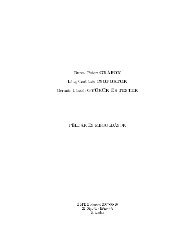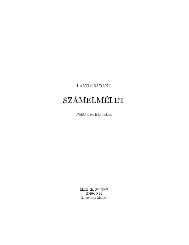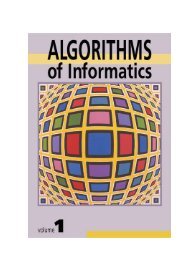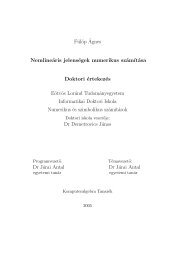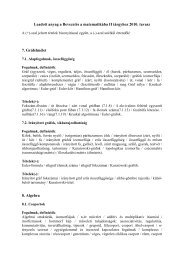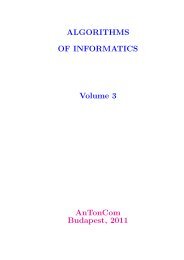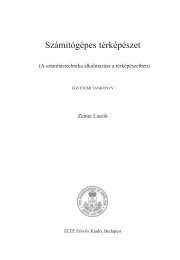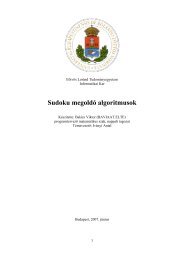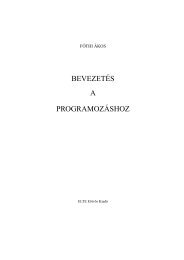On Erd˝os-Gallai and Havel-Hakimi algorithms
On Erd˝os-Gallai and Havel-Hakimi algorithms
On Erd˝os-Gallai and Havel-Hakimi algorithms
You also want an ePaper? Increase the reach of your titles
YUMPU automatically turns print PDFs into web optimized ePapers that Google loves.
<strong>On</strong> Erdős-<strong>Gallai</strong> <strong>and</strong> <strong>Havel</strong>-<strong>Hakimi</strong> <strong>algorithms</strong> 31<br />
Proof. (60) is a direct consequence of (27) <strong>and</strong> (60), <strong>and</strong> (60) implies (61).<br />
<br />
As Figure 1 <strong>and</strong> Figure 8 show, the convergence of the ratio G(n)/E(n) is<br />
relative slow.<br />
8 Number of graphical sequences<br />
Erdős-<strong>Gallai</strong>-Enumerating algorithm (EGE) [37] generates <strong>and</strong> tests for<br />
given n every zerofree even sequence. Its input is n <strong>and</strong> output is the number<br />
of corresponding zerofree graphical sequences Gz(n).<br />
The algorithm is based on Erdős-<strong>Gallai</strong>-Linear algorithm. It generates<br />
<strong>and</strong> tests only the zerofree even sequences, that is according to Corollary 5<br />
<strong>and</strong> Figure 8 about the 25 percent of the n-regular sequences.<br />
EGE tests the input sequences only in the checking points. Corollary shows<br />
that about the half of the elements of the input sequences are check points.<br />
Figure contains data showing that EGE investigates even less than the half<br />
of the elements of the input sequences.<br />
Important property of EGE is that it solves in O(1) expected time<br />
1. the generation of one input sequence;<br />
2. the updating of the vector H;<br />
3. the updating of the vector of checking points C;<br />
4. the updating of the vector of the weight points W.<br />
We implemented the parallel version of EGE (EGEP). It was run on about<br />
200 PC’s containing about 700 cores. The total running time of EGEP is<br />
contained in Figure 10<br />
The pseudocode of the algorithm see in [37]. The amortized running time of<br />
this algorithm for a sequence is Θ(1), so the total running time of the whole<br />
program is O(E(n)).<br />
9 Summary<br />
In Figure 1 the values of R(n) up to n = 24 are the elements of the sequence<br />
A001700 of OEIS [75], the values of E(n) up to n = 23 are the elements of the<br />
sequence A005654 [77] of the OEIS, <strong>and</strong> in Figure 2 the values G(n) are up to



